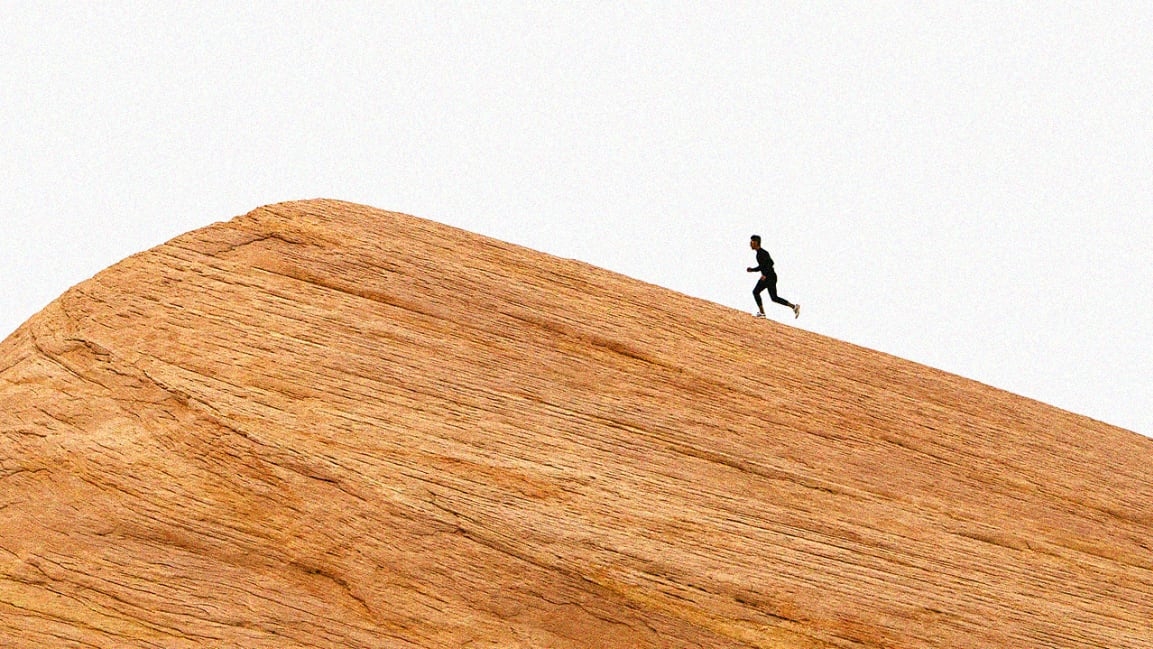Take these 5 steps to finish your big project
Are you in need of a quick creativity boost? We’ve all been there. There’s nothing more frustrating than a mental block when it comes to an unfinished project that you need to complete. Especially if your supervisor, client, or you are expecting something genius.
It’s easy to let a project or task that doesn’t have a looming deadline fall off your radar. Let’s be real; you’re much more likely to fall prey to the “urgent” fires that pop up during your day. But if we’re being honest, then it’s also important to recognize that those “big picture” creative projects are going to progress our careers a heck of a lot further than responding to a pesky email or voicemail on time.
As the founder of a productivity company, I’ve seen this happen time and again. People toss larger-scale innovation and strategy ideas to the side to cross off today’s to-do list. But let me tell you: If you’re waiting for that stroke of creative genius to get started, then you’ll be waiting a very long time.
Here are my five go-to tips for sparking the creativity and structure you need to finish that “big picture” project.
Step 1: Set constraints
Locking yourself in a quiet room, turning off electronics, or even carving out a two-hour window that will be devoted entirely to the project are all examples of a constraint or limitation you can set.
Why do it? Research shows that adding some limitations can really hone your focus so you can deeply explore a creative thought. Constraints can direct us to make the best out of what we already have. With constraints, we can dedicate our mental energy to acting more resourcefully.
In a 2015 study published in the Journal of Consumer Research, Ravi Mehta at the University of Illinois and Meng Zhu at Johns Hopkins University examined how thinking about scarcity or abundance impacted people’s creativity when it comes to their resources. The study had two groups: One had to write about growing up with scarce resources and the other about growing up having abundant resources. Both groups then had to come up with a plan for how to creatively use bubble wrap.
The ideas were judged blindly, and the group that wrote about growing up with scarce resources came up with the most creative uses for the bubble wrap. The researchers concluded that people with abundance had no incentive to use what’s available to them in novel ways. But when faced with scarcity, people gave themselves the freedom to use resources in less conventional ways because they had to.
Step 2: Set up your own deadline and rewards system
A deadline—even if it’s an internal one that you set yourself—will push you forward and motivate you to complete the task. Wide-open days, weeks, or even months of time are a recipe for procrastination. If you’re someone who needs to be motivated to stick to your deadline, set up a rewards system to keep you on track once you decide what that deadline will be.
Remember that rewards can make the work feel like a chore you need a break from, so it’s crucial to come up with rewards that relate to your goal. This might be buying a new book written by a CEO who inspires you, or enrolling in an online course on the topic you’re working on or a related topic. Make sure that your rewards complement your goal, not contradict it. Everyone is different, so you need to figure out how you can make deadlines work for you.
Step 3: Use your moods to your advantage
Create during powerful moods, whether those are negative or positive. Research now shows that creativity increases when both positive and negative emotions are high. Now, I’m not telling you to force yourself into a state of negative moods, but next time you’re in one, try and focus that energy into your project.
What about the next time you’re bored? Embrace it. That’s white space that you should welcome, rather than turning to Instagram or the latest game on your phone. Your brain needs room to stretch and play, and if you fill every spare second of your day, there’s no room to allow that space. A 2014 study in the Journal of Experimental Social Psychology found that bored people “are more likely to engage in sensation seeking.” This means they go looking for activities or sights that engage their minds, which stimulates the brain’s reward centers. Boredom inspires “lateral thinking,” which engages your mind to seek a more creative solution to the problem at hand because the obvious solution is not interesting.
Next time your partner or friend gets up to go to the bathroom at a restaurant, don’t rush to pick up your phone. Turning straight to our phone when we’re bored can make us rush right past an important observation.
Step 4: Do creative cross-training
Just like in fitness, your creative mind needs cross-training to perform at its maximum capacity. When you find your creative juices are lacking, it’s time to shake things up by trying something completely new. Trying out new creative outlets takes the pressure off of yourself when creating within your project space. Try doing something totally outside of your creative realm, such as learning a new language, playing an instrument, or painting. Creative cross-training fires up your brain in new ways and brings the play back into your creative process. It also builds your “muscles” in other areas and will help improve your creative practice.
Step 5: Take back Friday
Friday is notoriously the least productive day of the week. You’re four days into the workweek grind, so fatigue sets in. That’s why it’s the perfect day to work on something you don’t typically work on. Block off a large chunk of time and mark it as “unavailable” in your shared calendars with colleagues. Use this time to dive into the tasks on your list that will help move the needle on that project of yours. By purposely carving out time for yourself every week, you’ll build momentum toward your end goal, one week at a time.
Friday doesn’t have to be the least productive day of the week. In fact, it can be the day that you look forward to the most—not because the weekend is around the corner, but because you can set up your Fridays to work on that bigger project that will push your career ahead.
I hope this inspires you to pick up that big project that’s fallen to the wayside. Remember, if you set the proper guardrails, it doesn’t have to be so big and scary. Like anything worth doing, it takes some discipline and planning. Just trust yourself that you’ll get it done.
Tonya Dalton is a productivity strategist, owner of Inkwell Press, and author of The Joy of Missing Out.
(23)



